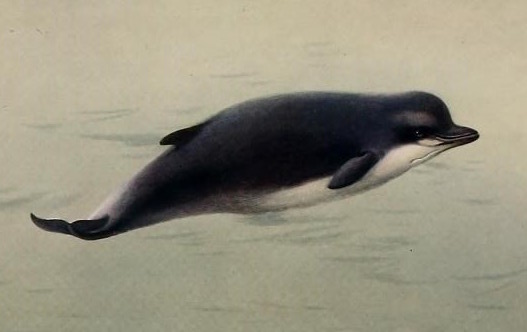Aquatic scientific names in the news …
The Grant Zoology Museum in London has announced a Whale Weekender this weekend (8th – 9th July).
Members of the public are invited to come along and help clean the bones of a Northern bottlenose whale and then assist in reassembling the skeleton.
The “great fish” as it was called was caught 157 years ago by two Somerset fisherman and was a sensation at the time. The eight metre long carcass went on a tour of the west country and the skeleton was then put on display hanging from the ceiling of the museum in Weston-super-Mare.
It was dismantled in 1948 and then transferred to the Grant Museum of Zoology and Comparative Anatomy in London. Although the skull has remained on display there has never been space to display the entire skeleton so the rest of the bones have been held in storage.
This weekend offers the first opportunity to check if the skeleton is complete, all the bones will be brought together for cleaning before being laid out in their entirety and for the first time the largest specimen in the museums collection will be properly seen.
 The whale bones ready to be brought out for cleaning and assembly. Image: Jack Ashby, Grant Zoology Museum
The whale bones ready to be brought out for cleaning and assembly. Image: Jack Ashby, Grant Zoology Museum
The northern bottlenose whale (Hyperoodon ampullatus) is a species of bottlenose whale belonging to the family Ziphiidae, and is one of two members of the genus Hyperoodon. The northern bottlenose whale is endemic to the NorthAtlantic Ocean and was heavily hunted in the 19th and early 20th centuries.
Mature specimens measure around 10 metres in length and are estimated to weigh in the region of 5,800 to 7,500 kilograms. The species is significantly larger than the related Southern bottlenose whale of the southern hemisphere. The beak is long and white on males but grey on females. The falcate (sickle-shaped) dorsal fin is relatively small and set far back on the body.
It is one of the deepest diving mammals known, reaching depths of 1453 m hunting for squid and fish near the sea floor and staying submerged for an hour or more. Despite being a deep diving species they are sometimes seen, in small numbers, playing and resting in shallow waters and can be playful and curious towards human vessels.
A Northern bottlenose whale was in the news in 2006 when one was spotted in the Thames reaching up river as far as the Albert bridge. Attempts to rescue it failed and its skeleton is now in the Natural History Museum, London.
 Northern bottlenose whale Painting: Archibald Thorburn (1920-21)
Northern bottlenose whale Painting: Archibald Thorburn (1920-21)
Hyperoodon ampullatus (Forster, 1770) – the Northern bottlenose whale
Etymology
Hyperoodon – Greek, Hypero-, hyperoon (υπερων), the upper part of the mouth, the palate; -odon, odous (οδους), tooth. “Hyperoon, in Greek, means palate; and odos means tooth.” * Named in reference to the presence of teeth on the surface of the palate.
*Lacépède, 1804
ampullatus – Latin, ampull-, ampulla, a vessel with two handles, a flask, bottle, jar; -atus, suffix indicating possession or likeness. Name likely alluding to the shape and the common name of the time, “… is called by the sailors Bottle-nose … has a head like a bottle…”*
*Forster, 1770